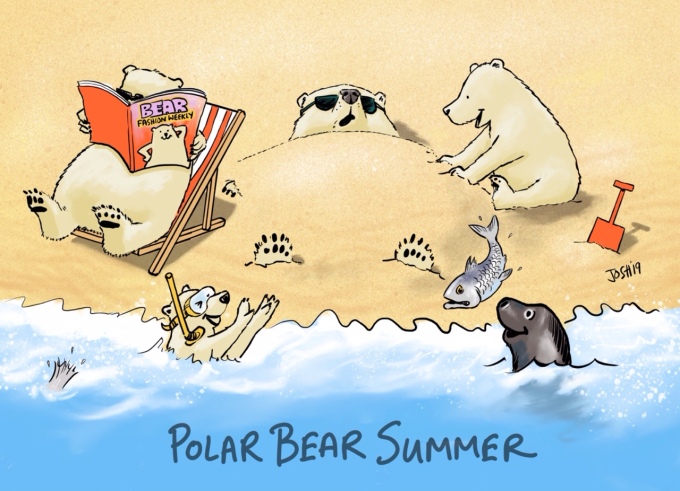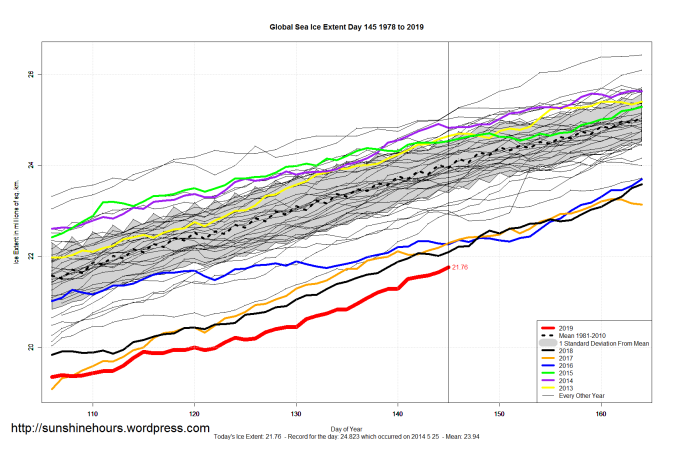Summer sea ice loss is finally ramping up: first year is disappearing, as it has done every year since ice came to the Arctic millions of years ago. But critical misconceptions, fallacies, and disinformation abound regarding Arctic sea ice and polar bear survival. Ahead of Arctic Sea Ice Day (15 July), here are 10 fallacies that teachers and parents especially need to know about.

The cartoon above was done by Josh: you can drop off the price of a beer (or more) for his efforts here.
As always, please contact me if you would like to examine any of the references included in this post. These references are what make my efforts different from the activist organization Polar Bears International. PBI virtually never provide references within the content it provides, including material it presents as ‘educational’. Links to previous posts of mine that provide expanded explanations, images, and…
View original post 3,839 more words
 High for 28 June 2019: 44.4 F/7.1 C
High for 28 June 2019: 44.4 F/7.1 C




 Here are the facts, references provided.
Here are the facts, references provided.


 Here’s the link to the DMI charts (
Here’s the link to the DMI charts (



